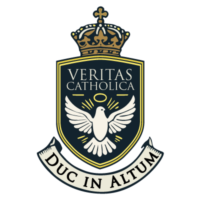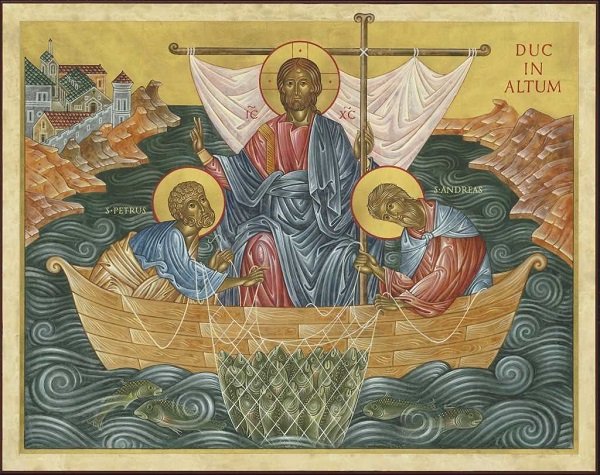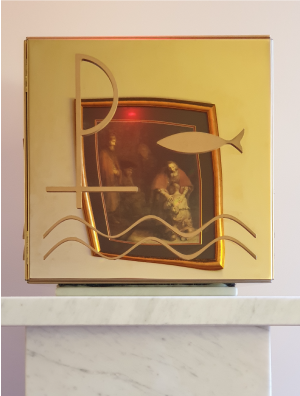In the rich tapestry of Christian theology, the image of Christ as the Good Shepherd is one of the most profound and comforting. Rooted in both Old Testament tradition and the life of Jesus, the Good Shepherd conveys an intimate relationship between the shepherd and his flock, a bond of love, care, and sacrifice. This biblical theme of shepherding also holds deeper meanings when we explore how Jesus, through His life, death, and resurrection, fulfilled the ancient prophecies. In this reflection, we will explore the theological richness of Christ the Good Shepherd as described by Pope Benedict XVI and reflected in the Gospels, especially John’s Gospel.
The Ancient Shepherd-King Tradition
The shepherd metaphor was widely used in ancient Near Eastern cultures, where kings were often described as shepherds. This was not just a title of power, but one of responsibility. The task of the shepherd-king was to care for his people, especially the weak and vulnerable. As Pope Benedict XVI points out, this shepherd image signified the just ruler, one who governed not for personal gain but for the welfare of his flock.
In the Old Testament, God Himself takes on this shepherd role, most memorably in Psalm 23: “The Lord is my shepherd; I shall not want.” The shepherd’s care in the psalm is personal and protective, as God leads His people through both good times and trials, giving them rest and comfort. In Ezekiel 34:13-161, God promises to take up the role of shepherd directly, criticising the leaders of Israel for their failures: “I myself will be the shepherd of my sheep…I will seek the lost…and I will bring back the strayed.” This passage foreshadows the coming of Christ the Good Shepherd, who would fulfil the divine promise.
The Slain Shepherd: Prophecies Fulfilled in Christ
One of the most surprising developments in the shepherd theme comes from the prophecy of Zechariah, where the shepherd is struck down and the flock is scattered (Zechariah 13:7).2 Jesus Himself quotes this verse on the night of His betrayal, identifying Himself as the shepherd whose death will cause the scattering of His disciples (Matthew 26:31).3 Pope Benedict XVI highlights the significance of this prophecy, as it reveals a crucial aspect of Jesus’ mission: the shepherd must suffer and die to bring salvation to His flock.
This concept of the slain shepherd is closely connected to another striking passage in Zechariah: “They shall look on him whom they have pierced” (Zechariah 12:10).4 The image of mourning for the pierced one prefigures the suffering and death of Christ, who would be pierced on the cross, shedding His blood as a fountain for the purification of sins. This prophecy finds fulfilment in John’s Gospel, where blood and water flow from Jesus’ side (John 19:34).5 Here, Christ the Good Shepherd becomes the Lamb who is sacrificed for the sins of the world, completing the circle from John the Baptist’s declaration: “Behold, the Lamb of God, who takes away the sin of the world” (John 1:29).6
The Door of the Sheep: A New Image of Leadership
Interestingly, Jesus’ shepherd discourse in John’s Gospel begins not with the familiar declaration, “I am the Good Shepherd,” but rather with another metaphor: “I am the door of the sheep” (John 10:7).7 This powerful image reveals an important aspect of Jesus’ role as the entryway to salvation. Those who enter through Him are the true shepherds, while those who seek to enter by another way are “thieves and robbers” (John 10:1).8
As Pope Benedict XVI explains, this metaphor establishes the criterion for authentic leadership within the Church. Peter, who is later entrusted with the role of shepherd in John 21, enters through this “door” by his love for Christ. When Jesus asks Peter three times, “Do you love me?” He is not only restoring Peter after his denial, but also preparing him to lead Christ’s flock. In this way, Peter becomes a shepherd who, like Jesus, leads through sacrificial love. By entering through Christ, Peter is not leading the sheep on his own behalf, but on behalf of the true Shepherd, Christ.
Laying Down His Life for the Sheep: The Heart of the Shepherd’s Mission
At the centre of Jesus’ identity as the Good Shepherd is His willingness to lay down His life for the sheep. In John 10:11,9 Jesus states, “The Good Shepherd lays down his life for the sheep.” This declaration reveals the radical nature of Jesus’ mission. Unlike a hired hand, who might flee when danger approaches, the Good Shepherd stands firm, even to the point of death.
Pope Benedict XVI draws attention to the fact that Jesus’ sacrifice is not something imposed on Him from the outside. Instead, He gives His life freely: “No one takes it from me, but I lay it down of my own accord” (John 10:18).10 This voluntary self-giving reflects the depth of God’s love for humanity. The shepherd does not just care for the sheep in a superficial sense; He is willing to die for them, to protect them from the ultimate threat—sin and death. Through this self-sacrifice, Christ the Good Shepherd leads His flock into the fullness of life, a theme that echoes throughout the Eucharistic celebration, where Christ gives His very self as food for the faithful.
Knowing and Belonging: The Intimate Relationship Between Shepherd and Sheep
Another key element of the shepherd discourse is the intimate relationship between the shepherd and his sheep. Jesus declares, “I know my own and my own know me, as the Father knows me and I know the Father” (John 10:14-15).11 This mutual knowing signifies more than mere intellectual knowledge—it is a deep, relational bond. As Benedict XVI points out, the sheep belong to the shepherd because they are known by him. This kind of belonging is not ownership in the sense of control, but rather a communion of love and trust.
In this way, the relationship between the shepherd and the sheep mirrors the relationship between the Father and the Son. Just as the Son is in perfect communion with the Father, so too are the sheep called to be in communion with the shepherd. This bond of knowing and belonging is transformative, inviting the sheep into the divine life of the Trinity. The shepherd does not dominate or exploit the sheep, but rather leads them to freedom and life.
One Flock, One Shepherd: The Universal Mission of Christ
In the latter part of John’s shepherd discourse, Jesus expands the scope of His mission beyond the people of Israel. He declares, “I have other sheep that are not of this fold. I must bring them also, and they will listen to my voice. So there shall be one flock, one shepherd” (John 10:16).12 This statement reflects the universal nature of Christ’s mission as the Good Shepherd. He has come not only to restore the scattered sheep of Israel but to gather all of humanity into one flock.
This vision of unity is rooted in the understanding that all people, regardless of their background, belong to God. In this sense, the shepherd discourse connects to the Great Commission in Matthew’s Gospel: “Go therefore and make disciples of all nations” (Matthew 28:19).13 The one Shepherd unites the one flock through His life, death, and resurrection, leading them into the fullness of life in God.
The Good Shepherd Who Leads Us to Life
The image of Christ the Good Shepherd is one of profound significance in Christian theology. It encapsulates the essence of Jesus’ mission: to lead, to protect, and ultimately to lay down His life for His flock. Through this image, Jesus fulfils the ancient prophecies of the Old Testament and reveals the depth of God’s love for humanity. He is not only the Shepherd who cares for His people but also the Lamb who sacrifices Himself for their salvation.
As Pope Benedict XVI highlights, this shepherd discourse is not just about leadership; it is about the intimate, life-giving relationship between the shepherd and the sheep. In knowing and belonging to Christ, the Good Shepherd, we are invited into the very life of God. This relationship brings true freedom and leads us to life in abundance, a life that is nourished by the Word of God and sustained by Christ’s sacrifice.
See the other chapter reviews of the first volume on Jesus of Nazareth here.

Footnotes
- 13 And I will bring them out from the peoples, and gather them from the countries, and will bring them into their own land; and I will feed them on the mountains of Israel, by the fountains, and in all the inhabited places of the country. 14 I will feed them with good pasture, and upon the mountain heights of Israel shall be their pasture; there they shall lie down in good grazing land, and on fat pasture they shall feed on the mountains of Israel. 15 I myself will be the shepherd of my sheep, and I will make them lie down, says the Lord God. 16 I will seek the lost, and I will bring back the strayed, and I will bind up the crippled, and I will strengthen the weak, and the fat and the strong I will watch over;[a] I will feed them in justice. ↩︎
- “Awake, O sword, against my shepherd,
against the man who stands next to me,”
says the Lord of hosts.
“Strike the shepherd, that the sheep may be scattered;
I will turn my hand against the little ones. ↩︎ - Then Jesus said to them, “You will all fall away because of me this night; for it is written, ‘I will strike the shepherd, and the sheep of the flock will be scattered.’ ↩︎
- “And I will pour out on the house of David and the inhabitants of Jerusalem a spirit of compassion and supplication, so that, when they look on him whom they have pierced, they shall mourn for him, as one mourns for an only child, and weep bitterly over him, as one weeps over a first-born. ↩︎
- But one of the soldiers pierced his side with a spear, and at once there came out blood and water. ↩︎
- The next day he saw Jesus coming toward him, and said, “Behold, the Lamb of God, who takes away the sin of the world! ↩︎
- So Jesus again said to them, “Truly, truly, I say to you, I am the door of the sheep. ↩︎
- “Truly, truly, I say to you, he who does not enter the sheepfold by the door but climbs in by another way, that man is a thief and a robber; ↩︎
- I am the good shepherd. The good shepherd lays down his life for the sheep. ↩︎
- No one takes it from me, but I lay it down of my own accord. I have power to lay it down, and I have power to take it again; this charge I have received from my Father.” ↩︎
- 14 I am the good shepherd;[a] I know my own and my own know me, 15 as the Father knows me and I know the Father; and I lay down my life for the sheep. ↩︎
- And I have other sheep, that are not of this fold; I must bring them also, and they will heed my voice. So there shall be one flock, one shepherd. ↩︎
- Go therefore and make disciples of all nations, baptizing them in the name of the Father and of the Son and of the Holy Spirit, ↩︎



